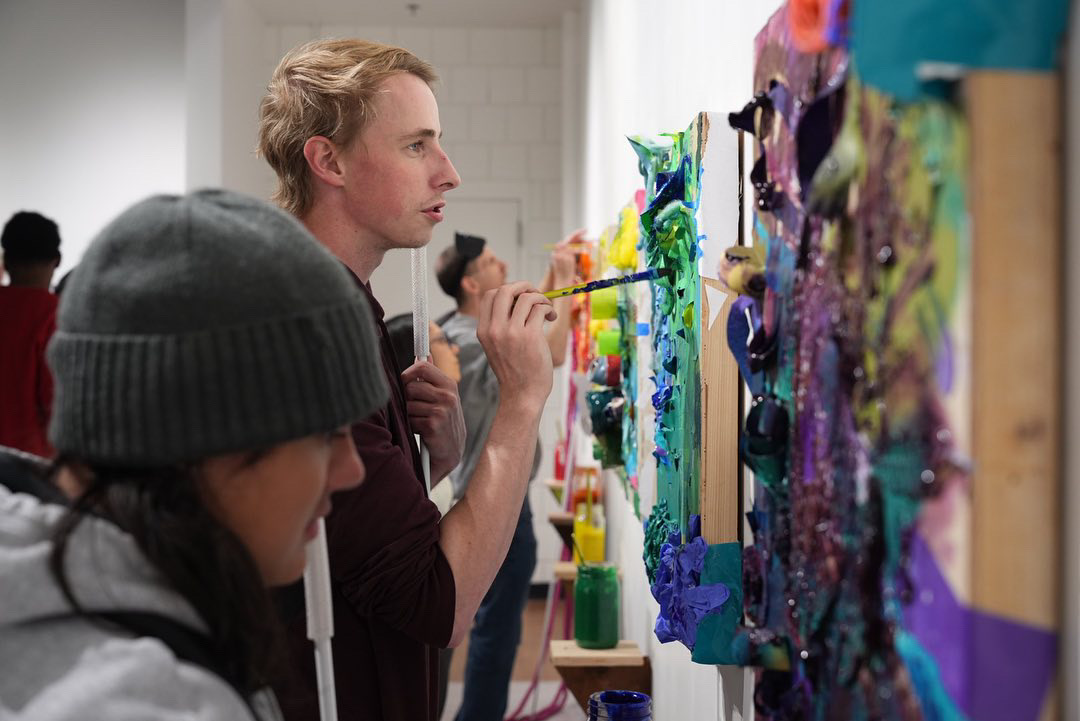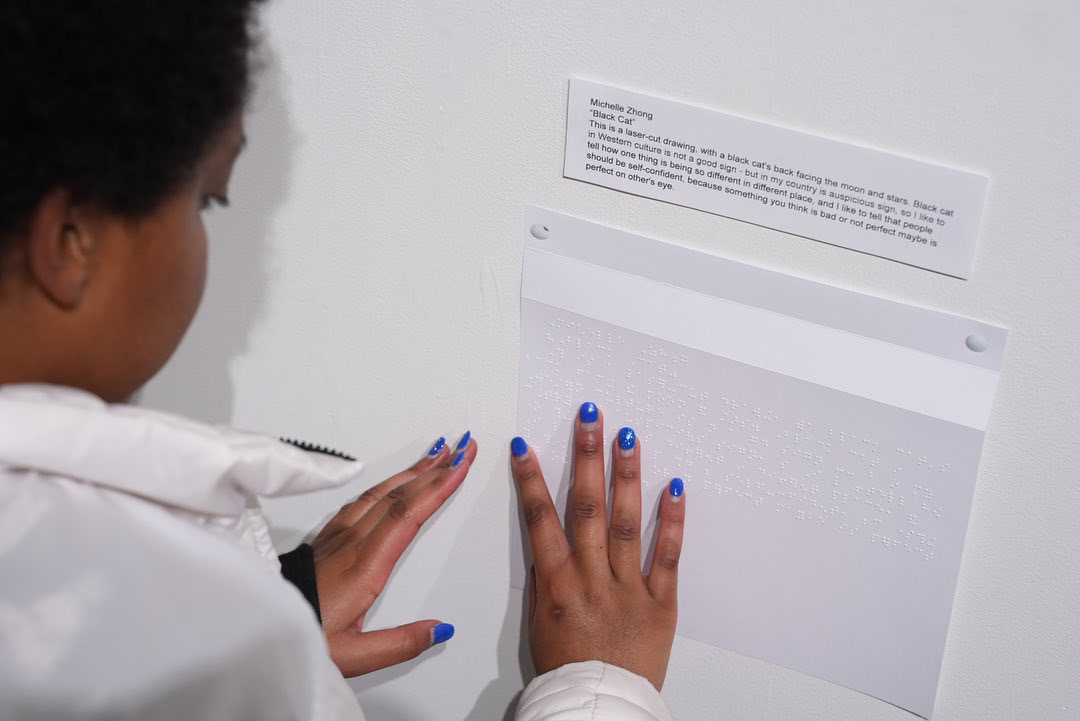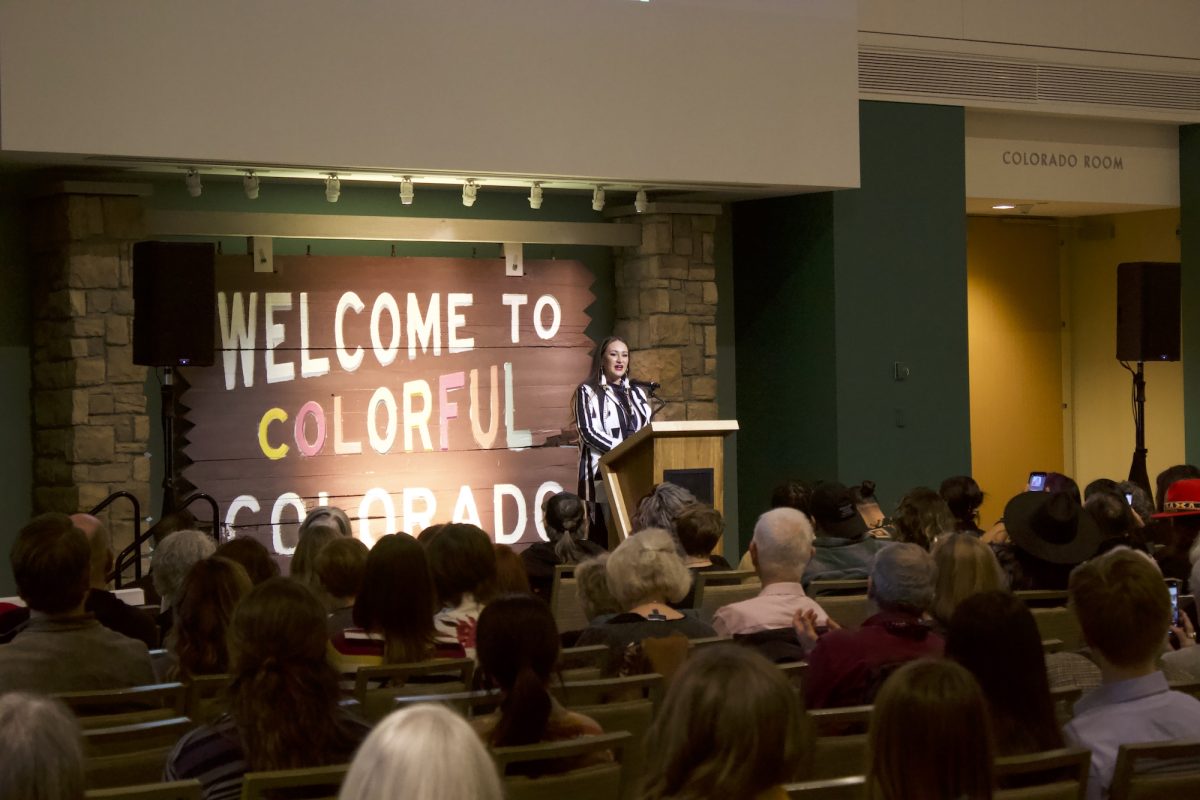Getting a Feel for Things


ACC students, primarily from the 3D and painting departments, worked alongside CCB artists to design a multi-sensory experience for the viewers. As a result, they created installations that can be touched and heard by the audience. Some of the pieces have sound recordings attached to the visual work, and all of them are meant to be felt for their texture. “This [exhibition] is a lot more accessible and incorporates different ways of experiencing art,” Colorado Gallery of the Arts manager Trish Sangelo said. “If you are visually impaired, we have the braille labels that allow you to read, and we have made sure that the experience can be done in any type of sense.”

The artwork in this exhibition is meant to go far beyond what is visually appealing to the viewer. The physical elements of each piece aim to engage the viewer in a concept that speaks to a broader social commentary. These works can inform an audience of an artist’s stance on a societal issue or reveal more about an aspect of an artist’s identity. “We’re engaging in a way that’s a little more academic, pulling the viewer in and expecting them to do some work,” Sangelo said. This type of gallery artwork can be much different than commissioned artwork in that the pieces should carry a specific message that the viewers can decipher through what they see, feel, or hear.

As mentioned before, the pieces are meant to be seen, touched, and heard. But beyond the sensory applications, the student artists want the viewers to actively engage with the work. One of the works included strips of paper that the viewers could tear off and discard, while another piece involved a butterfly with wings that could be pulled with a string. This allows the audience to feel as if they can exist in the world the artist is creating and therefore understand the feeling these works evoke.

The artists participating in this exhibition are doing so with the goal of expanding their talents so that they might one day make a living creating and selling their work. Because this project forces them to appeal beyond the sense of sight, the students have learned unique ways of executing what may seem to be a simple vision for an art piece. “This is a show were students have to think through a lot of different things,” Sangelo said. “They start with their concept, then think of how they will articulate that concept, what senses they will use, and then think about how they will fabricate their concept, meaning what materials they will use to make it. In art there is a lot of failure…but once it’s done and it’s successful, they will get to see how people interact with it.” For ACC artists and CCB students alike, this exhibition prepares them for the challenges and rewards that come with bringing a conceptual art piece to life. c








